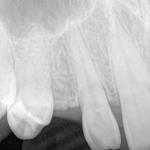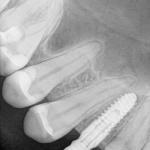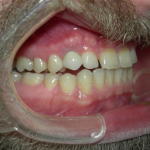By Arthur Kezian
Implant dentistry has been around for centuries in one form or another. In fact, it’s said that the Ancient Mayans first came up with the idea of dental implants back in 600 A.D., when they fashioned implants out of seashells!
While the concept may still be the same today, the world of dental implants is constantly changing, which is a good thing.
So how do today’s dental implants compare to the implants of old? Well, obviously, they’re not made out of seashells! In fact, because science is coming up with new technology all the time, today’s dental implants are totally different than the implants people were getting 10, 20, and 50 years ago.
Before you let your dentist start working on your mouth, make sure he’s working with the very latest in technology:
1. 3D CT scans

 Remember, before you can actually get any Los Angeles dental implants, your dental implant dentist needs to make sure that your mouth is healthy enough for them. A 3D CT scan does just that.
Remember, before you can actually get any Los Angeles dental implants, your dental implant dentist needs to make sure that your mouth is healthy enough for them. A 3D CT scan does just that.
Even just a few years ago, a dental implant dentist had to rely on x-rays to evaluate your jaw bone, and the structure of your face. Now, with 3D CT scans, your dental implant dentist can actually look at the density of your jaw bone – something that’s crucial in deciding whether or not you’re a good candidate for dental implants. Plus, a 3D CT scan shows more detail as to where your nerves and sinuses are. That way, your implants can be installed with a much greater precision – and a much lower chance for complications later.
2. Bio-compactable implants
Dental technology has definitely come a long way. Good, modern implants are all bio-compactable – meaning that the body will not see them as foreign, and, thus, not reject them. Today’s dental implants are made out of titanium, a light, strong metal that’s cheap enough to make dental implants affordable.
3. Mini dental implants

 In this case, smaller can be better. Mini dental implants are still made out of titanium, but they’re about half as wide as traditional dental implants. They can go right into your gums without any incisions. And, they can be used in cases where there is not enough bone density to accommodate standard implants – meaning that they are a viable alternative for people who aren’t good candidates for standard implants.
In this case, smaller can be better. Mini dental implants are still made out of titanium, but they’re about half as wide as traditional dental implants. They can go right into your gums without any incisions. And, they can be used in cases where there is not enough bone density to accommodate standard implants – meaning that they are a viable alternative for people who aren’t good candidates for standard implants.
As an added benefit, implants are significantly cheaper than their standard counterparts!
Dr. Arthur A. Kezian DDS 443 N. Larchmont Blvd Los Angeles, CA 90004 (323) 467-2777
Before you let a dentist start working on your mouth, make sure he’s working with the very latest in technology:
1. 3D CT scans
Remember, before you can actually get any implants, your dental implant dentist needs to make sure that your mouth is healthy enough for them. A 3D CT scan does just that.
Even just a few years ago, a dental implant dentist had to rely on x-rays to evaluate your jaw bone, and the structure of your face. Now, with 3D CT scans, your dental implant dentist can actually look at the density of your jaw bone – something that’s crucial in deciding whether or not you’re a good candidate for dental implants. Plus, a 3D CT scan shows more detail as to where your nerves and sinuses are. That way, your dentist can be installed with a much greater precision – and a much lower chance for complications later.
2. Bio-compactable implants
Good, modern implants are all bio-compactable – meaning that the body will not see them as foreign, and, thus, not reject them. Today’s dental implants are made out of titanium, a light, strong metal that’s cheap enough to make dental implants affordable.
3. Mini dental implants
In this case, smaller can be better. Mini dental implants are still made out of titanium, but they’re about half as wide as traditional implants. They can go right into your gums without any incisions. And, they can be used in cases where there is not enough bone density to accommodate standard implants – meaning that they are a viable alternative for people who aren’t good candidates for standard dental implants.
